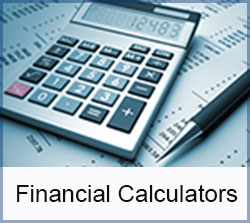Prepare in Advance for Next Year’s Tax Filing

Phew! Tax season is over! You have hopefully just filed your 2017 personal income tax returns. Was it a satisfying experience for you? Do you feel a sense of accomplishment or dismay? For many, the April 30th deadline seems to arrive way too soon. If this is the case with you, starting the process much earlier would seem to be the answer.
The process should include proper record keeping, taking advantage of the tax saving methods available to you, and, perhaps, finally getting a professional to complete and file your return on your behalf. The problem with handing your taxes alone is that often people don’t know what they don’t know. This results in paying more in taxes than was necessary. The cost of a professional completing your taxes potentially could be offset by the savings that might be gained.
Even if you earned little to no income, filing your return is a good idea and could prove to be advantageous. This is because there are a number of federal and provincial government programs that you might be eligible for if your declared income is below a certain threshold. You can refer to the Government of Canada website for the child and family benefits that might be available to you.
https://www.canada.ca/en/services/taxes/child-and-family-benefits.html
Here are a few suggestions that you might want to consider to save taxes come next tax season and the years to come:
FILE YOUR TAXES ON TIME
Often lack of proper records and searching for receipts and tax slips results in failing to meet the filing deadline of April 30th. This can prove costly due to the penalties involved. If you owe taxes, there is a 5% penalty of the balance owing, plus 1% per month of the balance owing for each month your return remains outstanding. The interest is compounded daily. Devise a system for filing away all those receipts, tax slips, and tax-related documents. There are computer applications that can help with this. Snap a picture of a receipt on your phone and transfer it to a file on your computer.
REPORT ALL OF YOUR INCOME
- Forgetting or omitting to disclose income (such as a missing T4), can result in additional interest and penalties. Those penalties can be quite severe so best to make sure you have everything.
- If you sold your principal residence you have to report this transaction on a special form in order to claim the principal residence deduction. Keep this in mind if you are selling your home this year.
FOR SENIORS – CONSIDER SPLITTING YOUR PENSION INCOME
If you are age 65 or older you can split eligible pension income with your spouse. Eligible pension income includes;
- Lifetime annuity payments from a Registered Pension Plan (RPP)
- Payments from a Registered Retirement Savings Plan (RRSP)
- Deferred Profit Sharing Plan (DPSP) and payments from a Registered Retirement Income Fund (RRIF).
In the Canada Pension Plan Act there are provisions that relate to CPP and under certain conditions a portion of CPP income can also be split with a spouse. Depending on your marginal tax brackets, the splitting of pension income with your spouse and both of you claiming the pension income credit, may result in avoiding the Old Age Security claw back.
Another opportunity that may be available is to contribute to your spouse’s RRSP. If an individual in a higher tax bracket contributes to his or her lower income spouse’s RRSP, tax savings could be the result. This is because the resulting income paid to the spouse from his or her RRSP will be taxed at a lower tax rate than that of the contributor.
Consult with a professional advisor to determine if splitting of your pension income is of benefit to you.
WHAT ABOUT OTHER INCOME SPLITTING OPPORTUNITIES?
While prior to 2018, owners of private corporations could avail themselves of strategies to split or “sprinkle” income with certain lower taxed family members, those strategies have been greatly curtailed. However, there does remain one strategy for individual tax payors that involves using what are referred to as prescribed rate loans. With this arrangement, the higher income spouse lends funds to his or her spouse for investment purposes. The outcome is the investment gain is higher than if it was taxed in the hands of the higher income spouse. Interest must be paid by the receiving spouse at the prescribed rate. The prescribed rate is set quarterly by the CRA and is currently 2%.
TAKE ADVANTAGE OF REGISTERED PLANS
If you are a member of a company Registered Pension Plan, congratulations. If you are not, you have alternatives to save for retirement as well as funding education costs.
Contributing to the following plans will result in a reduction of tax payable, deferral of investment income or both:
Registered Retirement Savings Plans (RRSP’s)
- When you receive your latest Notice of Assessment check it to see your RRSP contribution limit. This will include not only the annual contribution limit but also your total contribution room which is the unused portion of the aggregate of your annual RRSP maximum limits.
- This year, your maximum contribution is 18% of the income you earned in 2017 to a maximum of $ 26,230. This would be reduced if you were also a contributor to a Registered Pension Plan at your work.
- Contributions to an RRSP are tax deductible. On the flip side, all withdrawals taken are fully taxable at the tax rate in the year withdrawn.
- If you want to reduce your tax burden for 2018 and you want to make it easy on yourself, don’t wait until the last minute. Consider setting up a monthly contribution plan. Even if you are unable to contribute the full amount you will appreciate you have some of it funded by next tax season.
Registered Educational Savings Plan
- RESP’s are a great way to save for your child’s education. Although there is no immediate tax savings (RESP contributions are not tax deductible) the growth on the investment in the RESP is tax-deferred. In addition, there is a grant paid by the Canadian government into the RESP. The grant amount is 20% on the first $2,500 of annual contribution to a lifetime maximum of $7,200. Lower income families may be eligible for additional grants.
- Starting in 2007, there is no longer an annual maximum that can be deposited into an RESP. There is, however, a lifetime maximum of $50,000, which could be deposited all in one year. Keep in mind, however, that the educational grant is only paid on the first $2,500 eligible deposit for each year.
Tax Free Savings Plans
- TFSA’s were introduced in Canada in 2009. Any individual over the age of 18 could contribute to maximum amount ($5,000 in 2009). That amount was increased to $5,500 in 2013 and 2014 and then to $10,000 in 2015. The newly elected Liberal government reduced it back to $5,500 in 2016 where it remains today. A big advantage of the TFSA, however, is you never lose your contribution room. If you have never contributed and were 18 in 2009, you are eligible to contribute $57,500 in 2018.
- Unlike RRSP’s your contributions are not tax deductible. The plan, however, grows tax free and also unlike an RRSP, there is no tax payable on any withdrawals.
- You won’t save any immediate taxes on a TFSA contribution, but you will enjoy tax free growth which will never be taxable and that will save taxes in the future.
Registered Disability Savings Plan
- If you are eligible for the Disability Tax Credit, you may want to investigate an RDSP. The same holds true if you are a parent of a disabled child. Contributions are not tax-deductible when made or taxable when paid out, however, the additional government grants and investment earnings paid to the plan are taxable to the beneficiary when withdrawn. Professional advice should be sought when considering an RDSP.
Hopefully, this gives you a check list of the strategies and vehicles which could result in less tax being paid, not only next year but in years to come. The main message here is that the filing of Income Tax Returns has become very complicated and even though there are computer programs and websites to assist you in this task, the most effective way of filing your returns is to get someone more qualified than you to do it for you.


Comments are closed.